App Note 154: Measuring Affinity and Avidity under High and Low Expression Conditions

Kinetics of an antibody-antigen interaction forms the basis for immunological response and antibody therapeutics,
which is one of the fastest areas of growth in the pharma industry. Affinity and avidity of antibodies are the characteristics which define the overall efficacy of binding kinetics.
Application Note 153: Differentiating Mono and Bivalent Antibody Binding in MCF7 Cell line
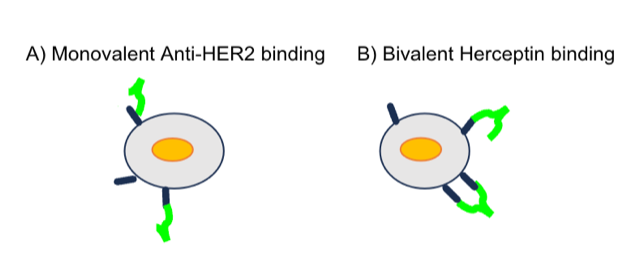
Understanding antibody binding and kinetics of therapeutic antibodies to tumor cells plays a critical role in advancing therapeutics. SPR is commonly used to study antibody binding reactions. However, it has …
Application Note 152: Binding Studies of an Integrin and its Mutants using BI-4500
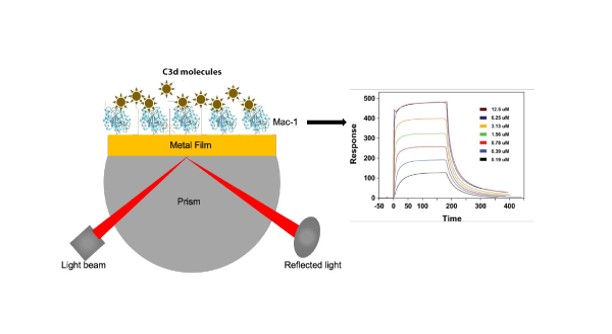
Integrins are heterodimeric receptors which help in cell adhesion and are ubiquitous to all metazoans.1 They also play a vital role in numerous cellular processes including cell growth, proliferation, differentiation, …
Application Note 151: Studying Cell Binding Heterogeneity using SPRm 200
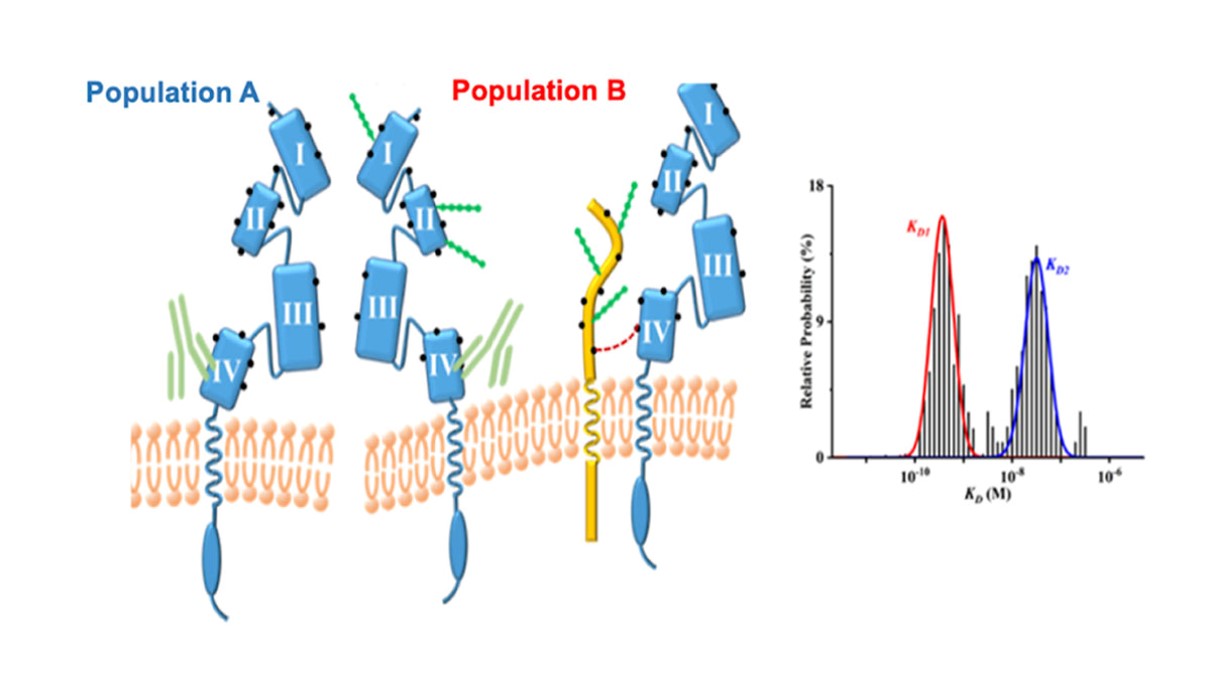
Dynamic diseases like cancer become more heterogeneous over the course of the disease. Due to the heterogeneity, the malignant tumor can harbor a collection of cells with different molecular signatures. …
Application Note 150: Studying the role of an antagonist for a pH-sensing GPCR using SPRm 200

Inflammatory bowel disease (IBD) is a complex, multifactorial inflammatory disease of the gastrointestinal tract resulting in chronic, aberrant mucosal inflammation of the gastrointestinal tract.1,2 The combination of immunologic, environmental, microbiome, …
Application Note 149: The Effect of Cell Fixation on Binding Interaction Kinetics
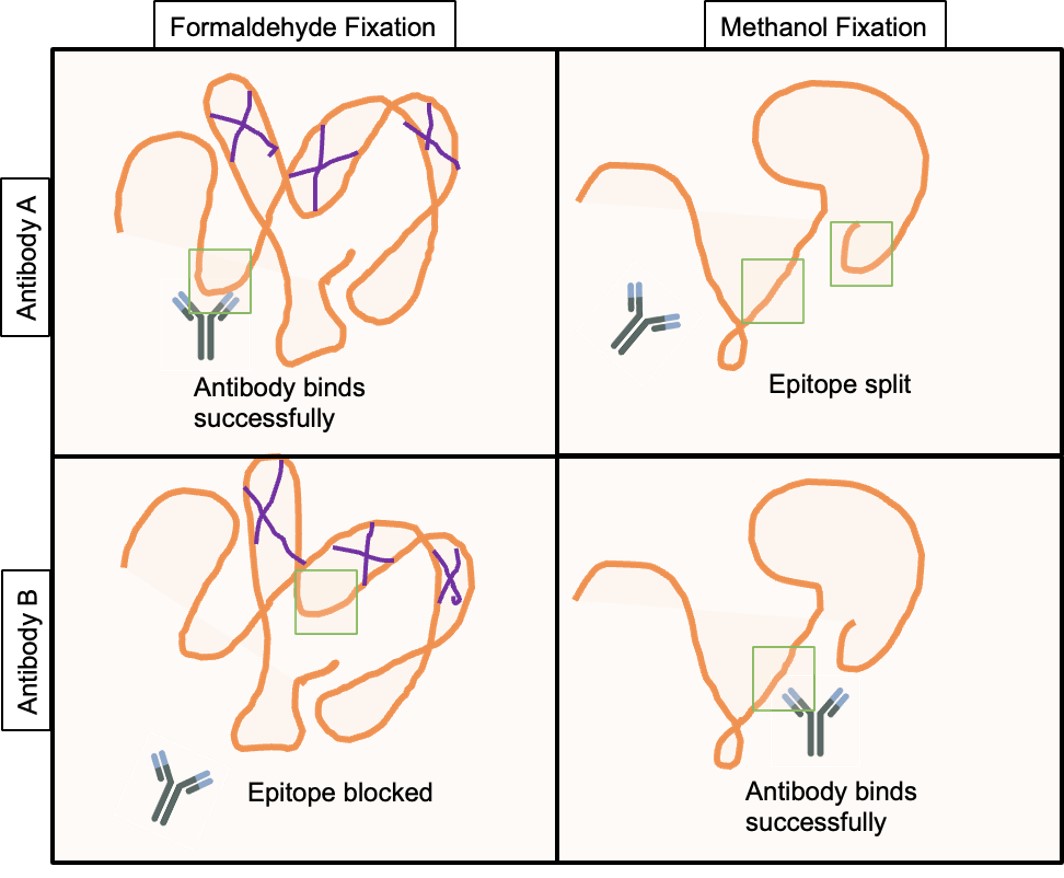
Membrane proteins play a major role in cell biology and are an important class of receptors targeted by drug candidates being developed in the pharmaceutical industry.1,2 Techniques for studying the …
Application Note 148: New Discovery of Chemerin Binding to CCRL2 Receptor Using SPRm 200

Chemoattractant receptors and their cognate ligands are promising drug targets for disruption of the tumor progression cascade. Most of these chemoattractant receptors are conventional seven transmembrane-spanning (7TM) G-coupled protein receptors …
Application Note 147: Variations in the Binding Kinetics of Native and Recombinant Protein Receptors
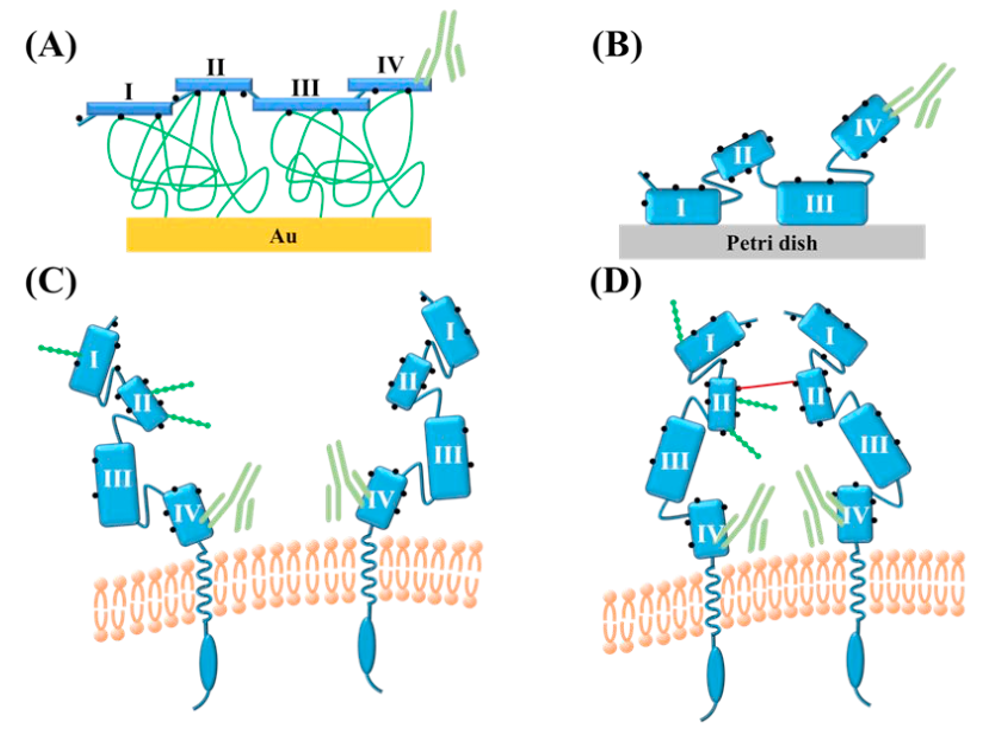
The long and arduous process of drug development involves screening of drug candidates by determining their affinities towards a cellular target and the kinetics of the interactions. A variety of …
Application Note 146: ENHANCED REDUCTION OF NONSPECIFIC INTERACTIONS
SPRM technology is unique in its ability to measure label-free kinetic binding interactions on cells in real-time. Its powerful single-cell resolution enables detailed study of cellular heterogeneity as well as …
Application Note 145: KINETIC MEASUREMENTS OF COVID-19 VIRAL S1 PROTEIN WITH CELLULAR AND RECOMBINANT ACE2 RECEPTORS

The pandemic due to the SARS-CoV-2 continues to evolve and remains an international concern. Covid infection is caused by the air-borne coronavirus 2 (SARS-CoV-2) and its mutants. The viral invasion …
Application Note 144: Single Cell Apoptosis Monitoring with SPRm Impedance
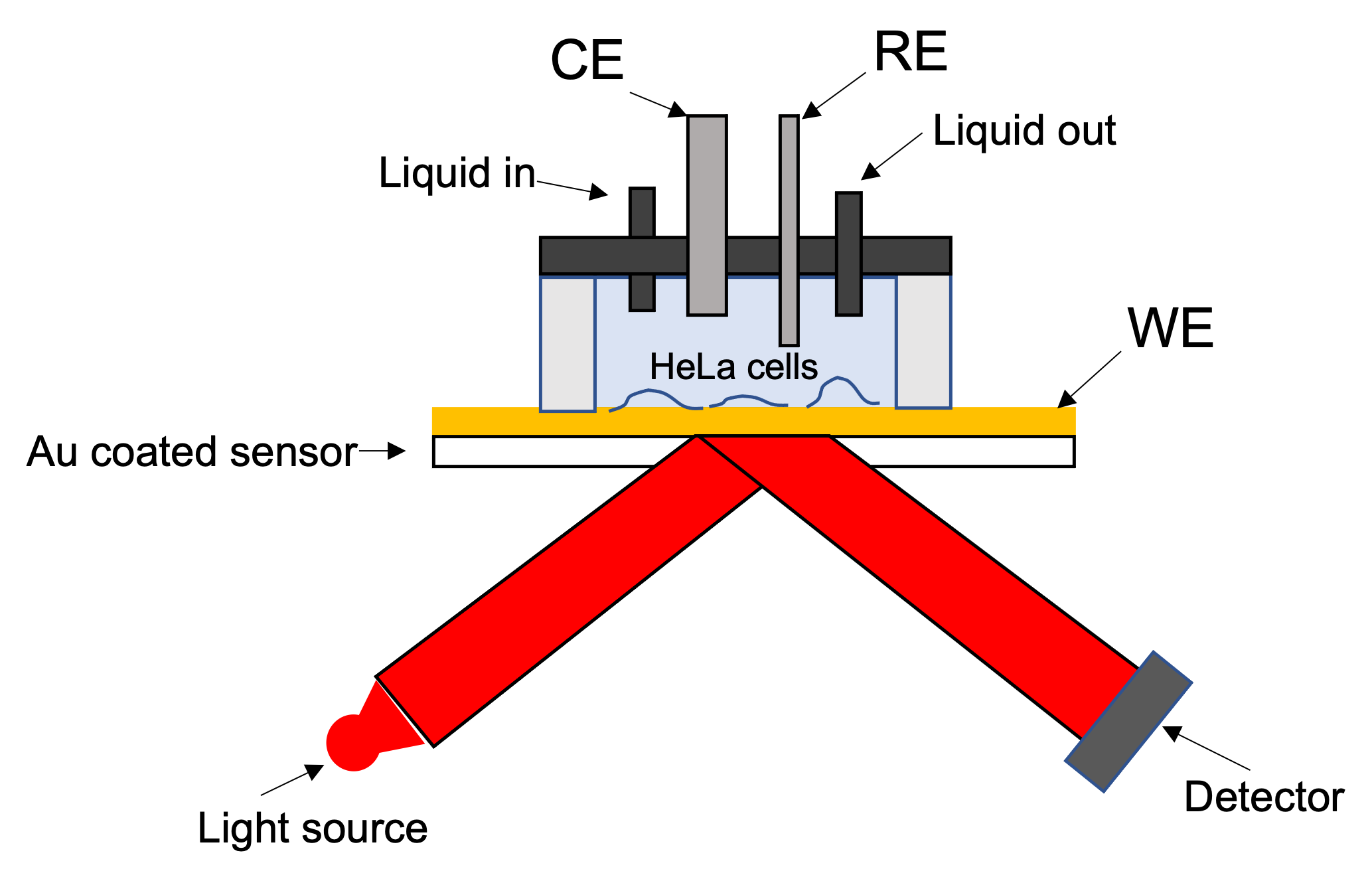
lectrochemical impedance spectroscopy (EIS) technique consists in introducing a perturbation into the sample by means of an AC voltage to an electrode and detecting its current response.
Application Note 143: Monitoring Electrochemical Activities of Single Prussian Blue Nanoparticles with SPRm Electrochemistry

Prussian blue is a pigment that is used to color paints, inks, textiles, and other commercial product. Prussian blue nanoparticles (PBNPs) are nanomaterials that present unique properties and excellent biocompatibility: they can be synthesized in mild conditions and can be derivatized with polymers and/or biomolecules. In addition, with its ability to transfer electrons efficiently and its large redox potential between reduction and oxidation, these nanoparticles result in enzyme-like characteristics which is ideal for biomedicine as therapy and diagnostic agents.
Application Note 142: Small Molecule Binding to Membrane Transporter Using SPRm200

Transporters are large proteins (40–200 kDa) located in the plasma membrane of cells and organelles. They normally span the membrane many times and modulate the transfer of xenobiotics (including nutrients, micronutrients and pharmaceuticals), and endogenous substances such as neurotransmitters, hormones, signaling molecules, vitamins across cellular membranes, tissues or organ barriers.
Application Note 141: SPRM Measurements of Binding Kinetics between Rituximab and CD20 on Live B Cells
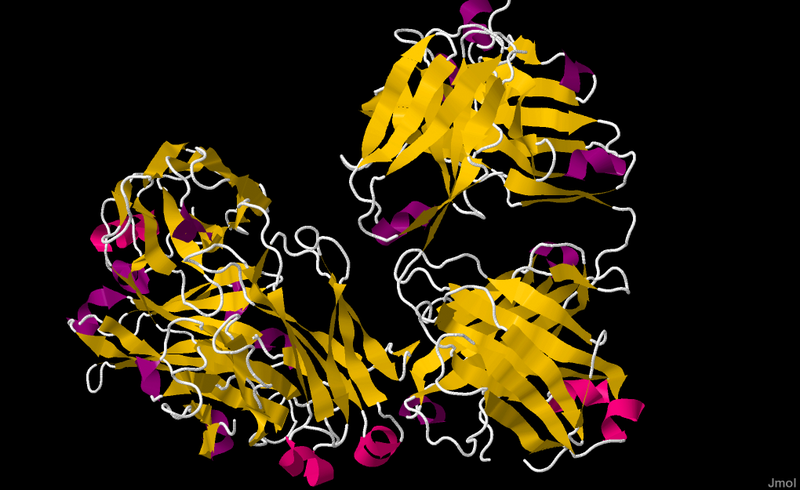
Cell-based immunotherapy has gained great attention from researchers and pharmaceutical companies, particularly due to its promise to treat various cancers. Understanding the interaction between drug candidates and targets on the cell membrane is crucial to drug development.
Application Note 140: Membrane Transport Protein Binding Kinetics Using Label-Free SPRm200
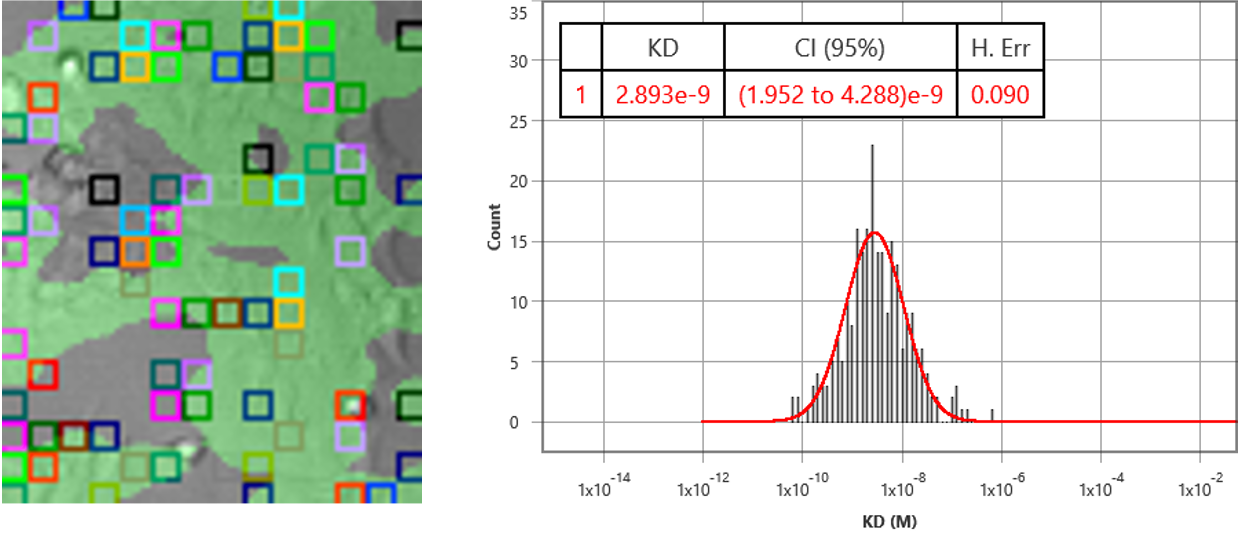
In this application note, binding interactions of an antibody to a membrane transport receptor were studied using SPRm 200. Transporters have important roles in physiological processes ranging from cellular uptake of nutrients to the absorption of drugs. Despite their importance as a drug discovery, it is difficult to determine its function: direct biophysical studies require these proteins be solubilized and purified and between their extraction and reconstitution, transport activity cannot be measured because of the lack of a vectorial environment.
Application Note 139: Single-Injection Kinetic Measurement Technique for Studies of COVID-19 S1 Protein and ACE2 Binding
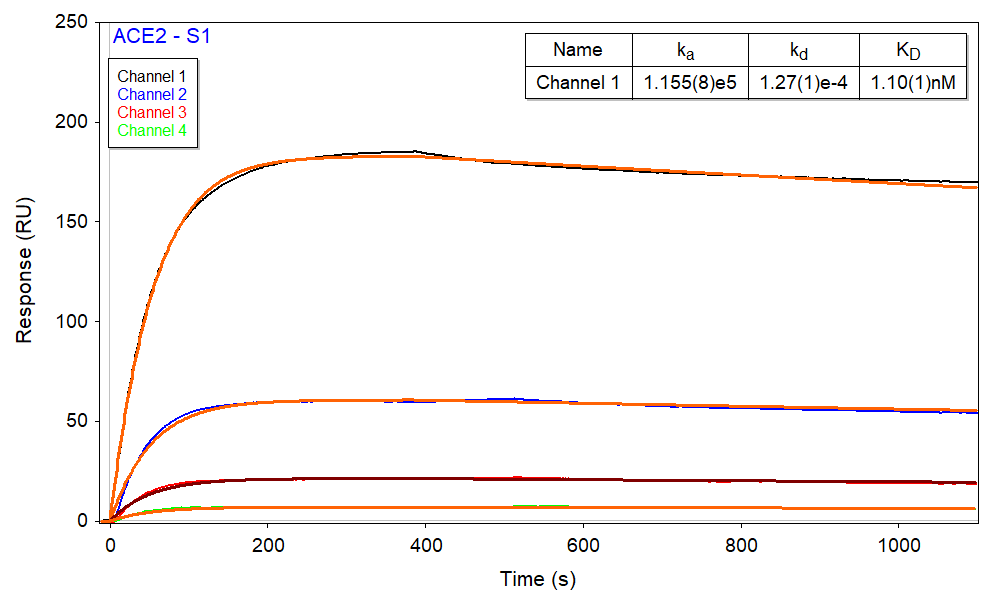
This application note shows the application of the single-injection measurement technique in binding kinetic studies between COVID-19 S1 and ACE2 proteins. The five-channel SPR instrument, with the BI-DirectFlow™ technology, provides a unique multi-channel technique for precise sample delivery and high-quality measurement.
Application Note 138: Kinetic Measurement of COVID-19 S1 Protein and ACE2 Binding

The coronavirus 2019 (COVID-19) pandemic continues to evolve. This disease is caused by the highly contagious coronavirus 2 (SARS-CoV-2) and is initiated by the viral invasion into host cells through viral attachment to angiotensin (Ang)-converting enzyme 2 (ACE2). ACE2, expressed in numerous different tissues, is the receptor through which the COVID-19 spike-protein (S-protein) gains entry into cells for subsequent viral replication.
Application Note 137: Ginnalin A and Tabersonine Inhibition of Amyloid β(1-42) Aggregation
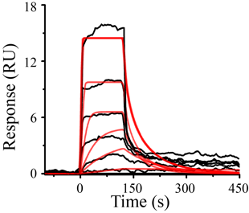
Alzheimer’s disease (AD) is currently ranked as the sixth leading cause of death in the United States and is the most common neurological disorder. Production and accumulation of amyloid-beta (Aβ) peptides in the brain are a hallmark of AD. Among Aβ peptides of different lengths, Αβ(1-42) has the highest propensity to aggregate.
Application Note 136: Sensitivity and kinetic analysis of carboxyl-graphene oxide-based SPR biosensors for label-free detection of lung cancer biomarker
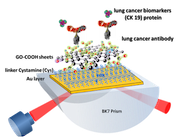
This work demonstrates the excellent potential of highly sensitive carboxyl-graphene oxide (carboxyl-GO) based surface plasmon resonance (SPR) immunosensor for the detection of lung cancer for cytokeratin 19 biomarker in human …
Application Note 135: Measuring Binding Kinetics in Cell Medium with SPRM
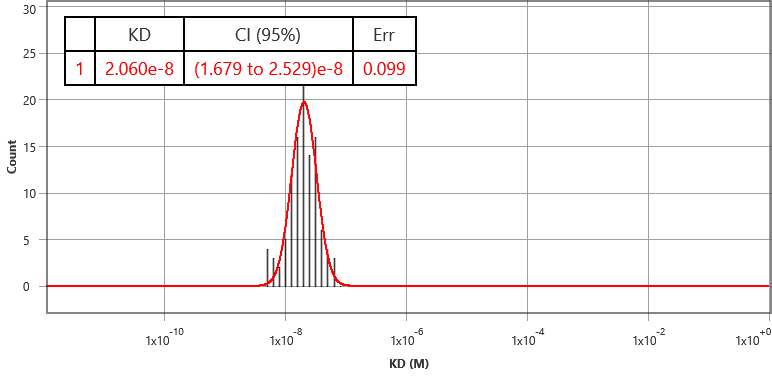
Fixation of cells is a convenient and routinely used method by many labs to study cells. However, fixation may alter certain types of protein receptors, thus affecting their binding kinetics. …
Application Note 134: Positive and Negative Control Studies of Small Molecule Binding to Membrane Protein
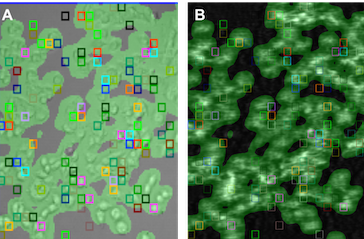
SPR microscopy (SPRm) has emerged as a unique tool for measuring the affinity and kinetics of ligand binding to membrane proteins on the cells directly. The technology integrates the traditional …
Application Note 133: Interaction of Protein Phosphatase 1 with its Muscle Glycogen– targeting Regulatory Subunit Measured by SPR
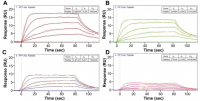
Glycogen is the primary storage form of glucose. Glycogen synthesis and breakdown are tightly controlled by glycogen synthase (GYS) and phosphorylase, respectively. The enzyme responsible for the process is protein …
Application Note 132: SR142948 Antagonist Binding to NTS-1 Receptor Using SPR Microscopy

Neurotensin receptor belongs to the family of G protein-coupled receptors (GPCR), which has 424 amino acids with 7 putative transmembrane domains.(1) Neurotesin receptor 1 (NTS-1) mediates multiple functions of neurotensin, …
Application Note 131: SPR Microscopy for Live Suspension Cells

SPRm 200 system is the world’s first commercial Surface Plasmon Resonance Microscopy (SPRM) which combines the high spatial resolution of optical microscopy with the label-free sensing capability of SPR. With …
Application Note 130: Measuring molecular binding kinetics with SPRM Impedance
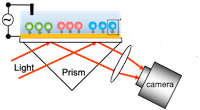
SPR Microscopy (SPRM) is a powerful tool for measuring the binding kinetics of ligands or drug compounds with membrane proteins, including GPCRs. It has many other unique features that lead …
Application Note 129: AZ1395 small molecule targeting GPR39

Membrane proteins play critical roles in cellular communications and are the most popular drug targets, accounting for over a half of the FDA approved drugs. One particularly important example of …
Application Note 128: SPR Microscopy for Acid-Sensing Ion Channels

Acid-sensing ion channels (ASICs) are voltage independent cation channels, which are expressed in both central and peripheral neurons.[1] Four genes that encode six ASIC subunits have been identified in mammals …
Application Note 127: Quantifying Antibody Binding to Membrane Proteins on Single Cells with SPR Microscopy
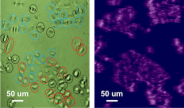
Monoclonal antibody (mAb) therapies have become established methods for treating cancer, autoimmune disorders, asthma and many other diseases. MAb drugs represent approximately half of the total sales of all biopharmaceutical …
Application Note 126: GPCR Binding Assays with SPR Microscopy
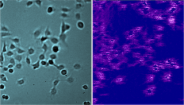
G-protein coupled receptors (GPCR) are integral membrane proteins that transmit signals from external stimuli to the cell interior. They play key roles in many cellular processes, such as sensorial, hormonal, …
Application Note 125: Lectin-Glycoprotein Interactions with SPR Microscopy
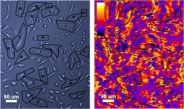
Membrane proteins are involved in many biological processes, such as signaling between cell’s internal and external environments, transport of ions and molecules and catalysis of chemical reactions [1] and they …
Application Note 124: Quantifying Molecular binding to Membrane Proteins on Individual Cells with Surface Plasmon Resonance Microscopy
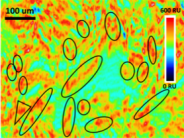
SPRm 200 System is the world’s first commercial Surface Plasmon Resonance Microscopy (SPRM). It combines the high spatial resolution of optical microscopy with the powerful sensing capability of SPR, making …
Application Note 123: Surface Plasmon Resonance Measurement of Protein-Peptide Interaction Using Streptavidin Sensor Chip

Streptavidin (SA) sensor chips are commonly used for kinetic interactions of biotinylated ligands. Streptavidin is a tetrameric molecule with an extremely high affinity towards biotin and, because of its binding …
Application Note 122: Surface Plasmon Resonance Microscopy for Multiple and Single Cell Membrane Binding Kinetics Studies
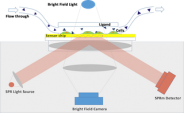
Surface Plasmon Resonance (SPR) is a powerful technique for measuring the binding kinetics of biomolecular interactions in a real-time and label-free manner [1]. In traditional SPR assays, the target molecule is extracted and purified from the cell and immobilized onto the sensor surface for measurement of the interaction kinetics between the target and the drug candidate.
Application Note 121: Protein Interactions in the Mycofactocin Biosynthetic Pathway
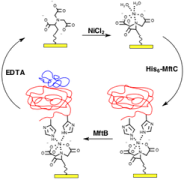
Protein-protein interactions are essential for many biochemical transformations and cellular processes. However, traditional methods of detecting these Surface plasmon resonance (SPR) is capable of analyzing protein-protein interactions kinetically while consuming little protein sample and does not rely on absorbance/fluorescence properties of proteins. This application note describes the SPR analysis of label-free protein-protein interactions found in the mycofactocin biosynthetic pathway.
Application Note 120: Electrochemical SPR Monitoring of Drug Interactions with Live Cancer Cells
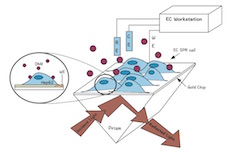
By combining SPR with electrochemical methods, many new capabilities and applications are now possible. This application note describes the measurement of apoptosis of cancer cells (HepG2) after treatment of Daunorubicin (DNR), an anti-cancer drug commonly used to treat specific types of leukemia.
Application Note 119: Small Molecule Detection by Surface Plasmon Resonance (SPR)

A major advantage of SPR technology is that the detection does not require the analyte to be labeled, such as with a fluorescent molecule or a redox-active tag. This is because SPR directly detects changes in refractive index resulting from changes in mass at the sensor chip surface. For researchers interested in pharmacology and pharmacokinetics or in general pharmaceutical research or drug discovery, this capability of label-free detection is particularly attractive.
Application Note 118: SPR for Food Safety and Monitoring: Melamine in Milk Samples
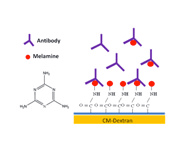
In 2008, the illegal adulteration of infant milk products with melamine (structure shown in FIG 1) led to an outbreak of adverse kidney and urinary effects in thousands of children in China.[1] Clandestine addition of melamine in milk products was to boost the detectable protein contents. Because of the severe impact of melamine on human health, the World Health Organization (WHO)
Application Note 117: Real-time Monitoring Biomarker Expression of Carcinoma Cells
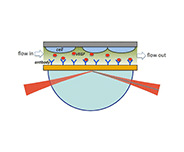
Vascular endothelial growth factor (VEGF) is an angiogenic signal protein biomarker produced by oxygen-hungry cells to stimulate the growth of blood vessels.[1] It binds to specialized receptors on the surfaces of endothelial cells and directs them to grow new blood vessels during embryonic development. Certain types of tumor cells produce abnormally large amounts of VEGF or block the action of angiogenesis inhibitors
Application Note 116: Temperature Dependence of Enzymatic Cleaving Activity
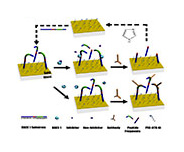
Some biomolecules such as enzymes can exhibit much greater biological activities at physiological temperature (37.5 °C) or higher (e.g., DNA polymerase). The focus of this study is to screen for potential inhibitors of β-site amyloid precursor protein cleaving enzyme 1 (BACE1). BACE1 is an enzyme that cleaves the transmembrane amyloid precursor protein to produce the amyloid beta
Application Note 115: SPR Assay of Clinical Alzheimer Disease Samples: Amyloid β Peptides in Cerebrospinal Fluids
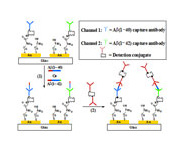
Alzheimer’s disease (AD) is the most common neurodegenerative disorder, affecting over 6.5 million people over the age of 65 in the U. S. In the senile plaques of AD patient’s brain, the major components are peptides composed of 39–43 amino acid residues (referred to as the amyloid β or Aβ peptides).[1-2] One of the hypotheses for AD neuropathology is that the misfolding and subsequent aggregation of these peptides
Application Note 114: SPR Binding Affinity Determination of Novel Peptide Inhibitors to the Innate Immune activator C1q
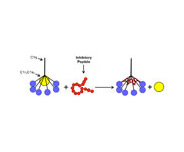
The complement system is an essential component of the human innate immune system, playing a critical role as a defense mechanism against invading pathogens, priming adaptive immune responses and helping to remove immune complexes and apoptotic cells. Three different pathways comprise the complement system: the classical, lectin and alternative pathways [1]. While the complement system plays a central role
Application Note: 113 – Flow-Through Electrochemical Surface Plasmon Resonance (SPR): Detection of Intermediate Reaction Products
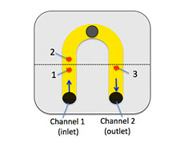
SPR is sensitive to various processes taking place on or near a sensor chip. The SPR sensor chip can also simultaneously serve as a working electrode for electrochemical measurements. Combining electrochemical with SPR measurements has led to the development of Electrochemical SPR (EC-SPR). To date, EC-SPR has been used in the analysis of trace metal ions, detection of surface bound redox species, electrochemical polymerization
Application Note: 112 – Detection of Wild-Type and Mutant p53 Proteins in Cancer Cell Lysates
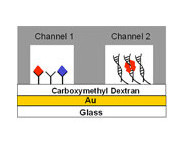
This application note describes the simultaneous SPR detection of wild-type and mutant p53 proteins in cancer cell laysates. p53 is a transcription factor (i.e., DNA-binding protein) that plays an important role in DNA repair and tumor suppression by inhibiting the growth of tumor cells through eliciting either cell-cycle arrest or apoptosis [1-3]. In solution, p53 molecules tetramerize at their C-termini and the resultant p53 tetramer can bind
Application Note: 111 – Measuring Surface Charge Density: A New Application with SPR
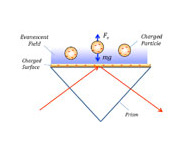
Surface charge density is a basic quantity that is directly relevant to many phenomena, from surface interactions to DNA hybridization. Measurement and quantification of surface charge density can lead to a better understanding of biomolecular interactions on surfaces. To date, different techniques have been developed to measure surface charge density, including potentiometric titration, atomic force microscopy and reflection interference
Application Note: 110 – Studying Protein Adsorption Properties with SPR
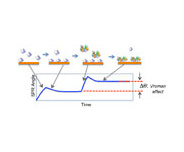
Surface Plasmon Resonance (SPR) can be applied as a convenient, sensitive and label-free technique to study various surface phenomena. One such example is the Vroman effect exhibited by protein adsorption onto surfaces. This important effect arises from the fact that protein adsorption capability onto a surface depends on motility, which is intimately related to its molecular weight. In general, a high molecular weight (HMW) protein adsorbs
Application Note: 109 – Application of SPR to Bacteriology: Endotoxin/Protein Interaction Studies
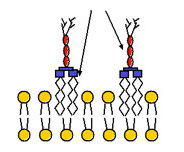
Endotoxin (commonly referred to as lipopolysaccharide in bacteriology) is associated with the outer membrane of Gram-negative bacterial pathogens such as Escherichia coli, Salmonella, Shigella, and Pseudomonas [1-2]. The interaction between endotoxin and bacterial cell surface is schematically depicted in Figure 1. Endotoxin elicits a series of pleiotropic effects on cells or organisms and is therefore harmful to most mammals
Application Note: 108 – SPR as a Chromatographic Detector: Separation and Label-Free Detection of Biomolecules
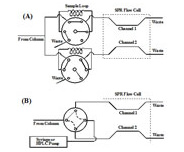
In recent years, SPR has been used as an alternative detector for monitoring elution of a variety of species (e.g., polysaccharides and proteins [1-4]) out of liquid chromatographic (LC) columns. In addition to simplicity and fast speed the SPR detector can detect any eluent, as long as its index of refraction is different from that of the carrier buffer. The open design of the BI-SPR instruments allows users to conveniently connect
Application Note: 107 – Binding Kinetics Analysis with SPR: Interaction between Bovine Serum Albumin (BSA) and Anti-BSA

In restriction digestion, BSA has been used to stabilize enzymes during DNA digestion. It is also widely used as a biomolecule to block active sites on surfaces. Formation of the anti-BSA/BSA immune complex is relevant to studies of the receptor site of the red blood cells..
Application Note 106: Flow Injection-SPR: Sensitive and Sequence-Specific DNA Assays
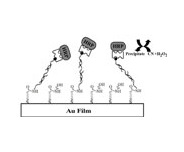
SPR (SPR) has been demonstrated as a powerful technique for rapid, sensitive, and label-free genetic analysis [1-5]. When the sensor surface is coated with a single sensing (probe) DNA, SPR can be used for both affinity binding studies (i.e., kinetic measurements) and concentration detection of a target DNA. However, the concentration detection levels for SPR and SPR imaging are typically at low nanomolar (nM) [3, 4],
Application Note: 105 – Protein/Drug Interaction: Ferulic Acid and Bovine Serum Albumin
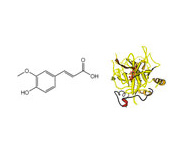
SPR has been demonstrated to be a powerful optical technique for bioaffinity studies at the solid/solution interface. In general, SPR measures the change in refractive index originated from the binding of a solution species with a molecule pre-immobilized onto the SPR sensor chip. The advantages of SPR include its simplicity, high sensitivity, obviation of sample labeling, and amenability for real-time analysis
Application Note 104: Flow-Injection SPR: Sensitive Determinations of Heavy Metal Ions
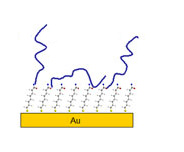
Flow-injection SPR has been demonstrated as a viable alternative for sensitive detection of heavy metal ions at trace levels [1-4]. The impetus behind using SPR for elemental analysis stems from its high sensitivity, simplicity, compact design (for possible field-based work), and universal detection mechanism (e.g., any elemental species adsorbed onto the SPR sensor can cause a detectable signal). The challenge, however, is to prepare a chemically or
Application Note 103: Electrochemical SPR: Metal Deposition/Stripping and Reorganization of Electroactive Organic Thin Films
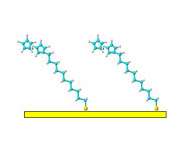
In addition to studies of redox-induced conformational changes of surface-bound proteins (cf. Application Note #102), electrochemical SPR can be used to quantify the amount of metal electrodeposited onto a surface and reorganization of organic thin films upon redox reactions. A BI-SPR 1000 was used to quantify the amount of Cu deposited and stripped during Cu2+ reduction/Cu oxidation in a CuSO4 solution
Application Note 102: Electrochemical SPR: Redox-Induced Protein Conformational Changes
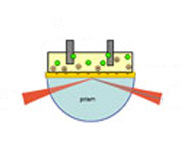
Both electrochemical and surface plasmon resonance (SPR) techniques measure various processes taking place at or near an electrode surface. Combining the two techniques allows one to obtain new insight into these interfacial processes. One example is redox-induced conformational changes in surface-bound protein molecules. However, most SPR setups are not suitable for monitoring fast kinetics or small thickness variations
Application Note 101: Fast Kinetics of Conformational Changes in Proteins
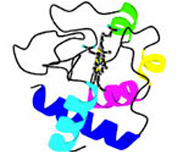
Understanding conformational changes in proteins and other biomolecules is important because of their critical roles in many biological functions and processes. These conformational changes are often small and fast, making it difficult to measure and monitor. Surface Plasmon Resonance (SPR) is capable to detect rather small conformational changes in surface bound molecules [1]. However, most SPR setups are not suitable
